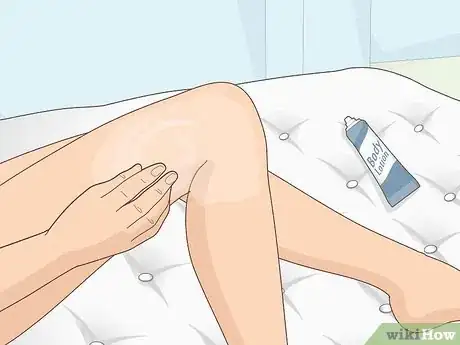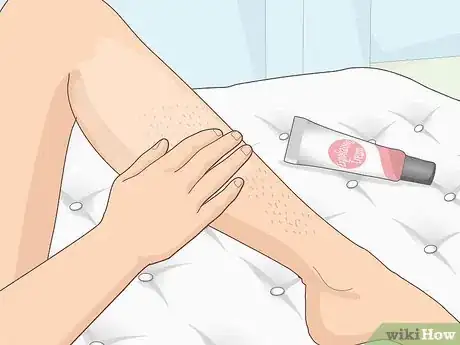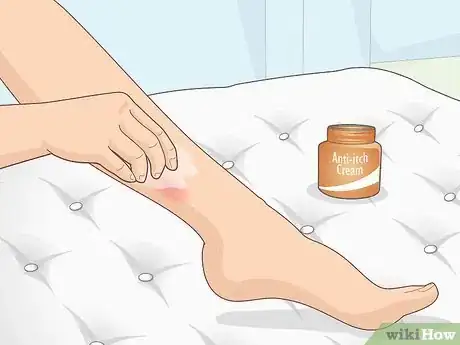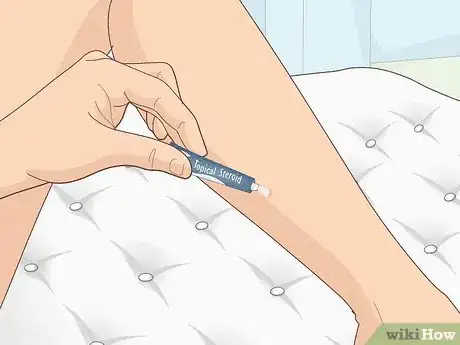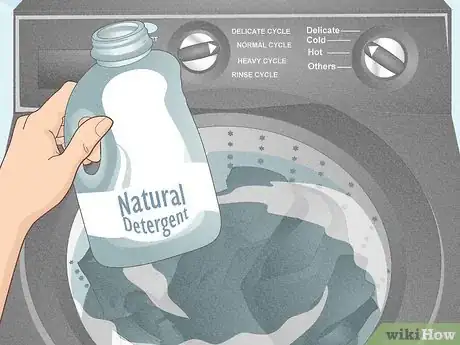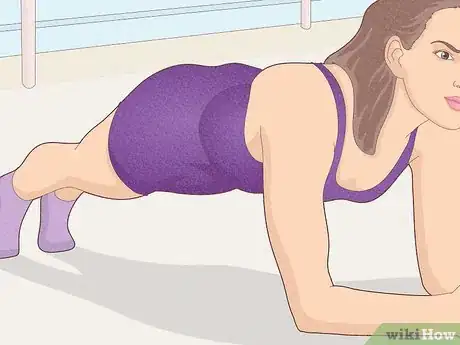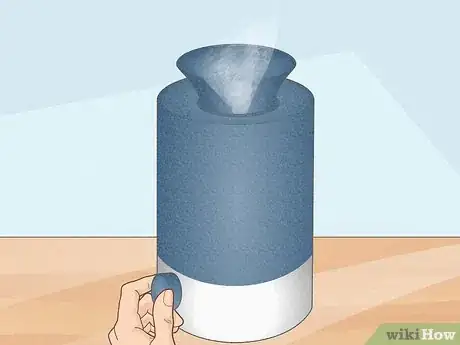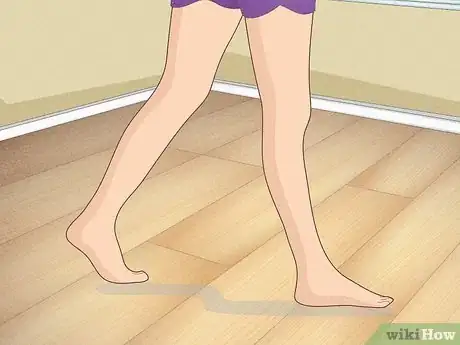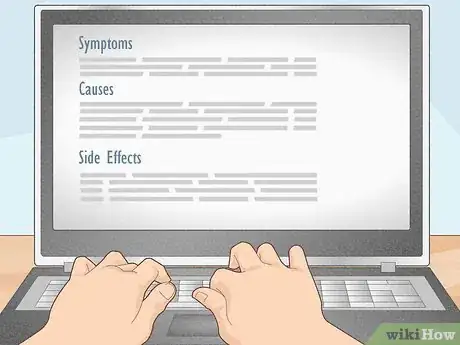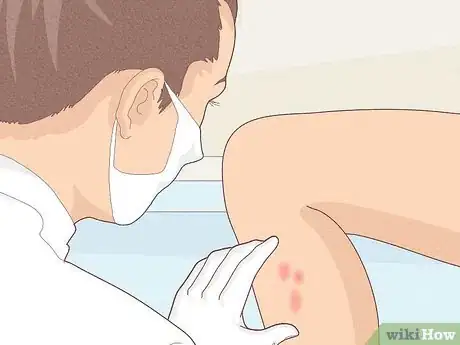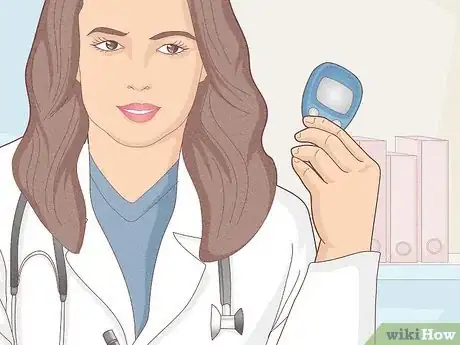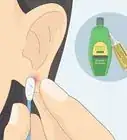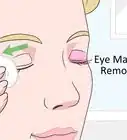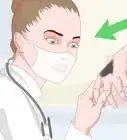This article was medically reviewed by Luba Lee, FNP-BC, MS and by wikiHow staff writer, Jennifer Mueller, JD. Luba Lee, FNP-BC is a Board-Certified Family Nurse Practitioner (FNP) and educator in Tennessee with over a decade of clinical experience. Luba has certifications in Pediatric Advanced Life Support (PALS), Emergency Medicine, Advanced Cardiac Life Support (ACLS), Team Building, and Critical Care Nursing. She received her Master of Science in Nursing (MSN) from the University of Tennessee in 2006.
There are 8 references cited in this article, which can be found at the bottom of the page.
This article has been viewed 11,630 times.
If your legs are itching uncontrollably, chances are you just want to make the itching go away as soon as possible. To make itchy legs a thing of the past, focus on what's causing the itching and try to get rid of that. We've gathered solutions to this annoying problem ranging from the simple (dry legs) to the complex (underlying health conditions). While there are many reasons your legs might be itching, there are also just as many ways to make them stop.
Steps
Use body lotion.
-
Rub a hypoallergenic body lotion on your legs if you have dry skin. Massage the lotion into your skin using a circular motion. Do this whenever you get out of the bath or shower, first thing in the morning, and at night before bed.[1] X Trustworthy Source American Academy of Dermatology Professional organization made of over 20,000 certified dermatologists Go to source
- If your legs are itching when you go to bed, use a lotion with aloe to help soothe the itch. Allow your skin to breathe for a minute or two before you hop under the covers so the lotion doesn't end up on your sheets.
Rub on some plant oils.
-
Coconut and grapeseed oil both work well to hydrate dry skin. Try rubbing a fingertip-sized amount of the oil on your legs where you’re the itchiest. Since plant oils are great for moisturizers, they can help relieve your dry skin. Many plant oils are also antibacterial and anti-inflammatory, so it may help speed up healing and get rid of itchiness if you have irritation.[2] X Trustworthy Source PubMed Central Journal archive from the U.S. National Institutes of Health Go to source
- Oat oil and almond oil are a couple of other options you can try to treat your itchy legs.
Try exfoliation.
-
Prevent and treat razor burns from shaving with an exfoliator. If your legs always itch after you shave, razor burn might be the culprit. Buy an exfoliating cream or gel and rub it into your skin before shaving. Rinse it off completely, then use shaving cream and sharp blades to shave.[3] X Research source
- Using an exfoliator sloughs off the dead skin that can clog up your razor blades and cause your razor to scrape too harshly over your skin.
- Dull blades are more likely to knick your skin and cause razor burn than newer sharp blades.
Apply anti-itch cream.
-
Put on an over-the-counter anti-itch cream for an allergic reaction. Buy an anti-itch cream at your local pharmacy, grocery, or discount store. Wash your skin gently with mild soap and warm water, then pat it dry. Smooth the anti-itch cream over the rash.[4] X Trustworthy Source American Academy of Dermatology Professional organization made of over 20,000 certified dermatologists Go to source
- Avoid scratching an itchy rash, which can cause the irritant to spread and make the rash worse. If necessary, cover the rash with a bandage or gauze to keep from scratching it.
- Parasites in oceans, lakes, and rivers can cause your skin to itch. Often, the symptom won't appear for several days, so you might not be able to identify swimming as the cause of the itching at first. With itching caused by parasites, you'll usually have a rash, but sometimes you won't.
Soak the area with aluminum acetate.
-
Treat contact dermatitis with wet dressings, baths, and lotions. If you have contact dermatitis, wet a dressing with aluminum acetate solution and hold it over the area for 20–30 minutes at a time. You can do this 4–6 times a day. After soaking it, apply calamine lotion to help control the itching. If you have widespread itching, take an oatmeal bath or an over-the-counter dermoplast spray.
- Avoid lotions with antihistamines and benzocaine since they may trigger an allergic reaction.
- Don’t use occlusive dressings for treating contact dermatitis.
- If you have a reaction to poison ivy, look for soaps made specifically for treating it for your bath.
Use topical steroid cream.
-
Use this for bug bites, plant allergies, or contact dermatitis from detergent. Wash your legs with warm water and gentle soap. Then apply a topical steroid, such as hydrocortisone 1% cream. anywhere you see a red mark or welt. Allow the cream to dry before you cover the bite with a bandage or clothing. You can use the cream up to 4 times a day for 5–7 days.[5] X Research source
- You can take oral diphenhydramine, like Benadryl, to help itching and get to sleep.
- Loratadine, like Claritin, can also reduce allergic reactions without making you tired during the day.
- Topical steroids can also help relieve itching from grass allergies and poison ivy.
- If you have serious reactions to bug bites, spray your legs with bug spray before you go outdoors, especially when the weather's warm.
Change your laundry detergent.
-
Use a laundry detergent formulated for sensitive skin for dermatitis. Check the ingredients on the laundry detergent you use to see if there's anything you recognize that you've had an allergic reaction to before. A natural detergent with no added dyes or scents keeps your clothes clean without irritating your skin.[6] X Research source
- Washing your clothes in harsher detergents can cause your legs to itch, especially if you're engaged in an activity. Sweating can release chemicals from the fabric that you might not otherwise notice.
Wear moisture-wicking clothes.
-
Choose attire with dry-weave and moisture-wicking properties for heat rash. Buy affordable workout clothes online or at discount stores. Look for something loose made of lightweight, breathable material. Check the tag to see if the fabric is moisture-wicking. These types of fabric pull sweat away from your skin to make you less itchy.[7] X Research source
- When you wash moisture-wicking workout clothes, let them air dry rather than putting them in the dryer. This ensures the fabric retains its moisture-wicking quality.
Set up a humidifier.
-
Keep your skin hydrated by boosting humidity levels in your home. Buy a humidifier online or anywhere home goods are sold. Set up the humidifier either in the driest part of your home or in the area where you spend the most time.[8] X Trustworthy Source American Academy of Dermatology Professional organization made of over 20,000 certified dermatologists Go to source
- Dry air in your home also dries out your skin, which can cause your legs to itch. A humidifier will increase the relative humidity in your home so your skin stays supple.
- If a large humidifier isn't in your budget, there are plenty of ways you can add moisture to the air in your home for free, such as air-drying your clothes inside or boiling water on the stovetop.
Move around more.
-
Walk around if your legs itch when you lay down to go to sleep. If your legs itch when you're stationary for a while or start to relax, get up and walk around for a little while. This will usually help your legs to calm down a bit so you can fully relax.[9] X Research source
- If this happens frequently when you rest, particularly when you're getting ready to go to sleep, you might have restless legs syndrome. Talk to your doctor about your symptoms and they'll come up with a treatment plan based on what might be causing the problem.
Adjust your medications.
-
Find out if itchiness is a side effect of your medication. Look up common side effects of any medication you're taking online. You could also call your doctor and ask them. Some medications, particularly prescription-strength opioid pain relievers and blood-pressure drugs, can cause you to itch.[10] X Trustworthy Source American Academy of Dermatology Professional organization made of over 20,000 certified dermatologists Go to source
- If your itch is a side effect of a medication you're taking, your doctor might be able to prescribe a different type of medication that provides the same benefit without that side effect.
- Sometimes the side effect is unavoidable or there's no suitable alternative drug available. Ask your doctor about ways to remedy the itching so that it's less bothersome.
See a dermatologist.
-
Go to a dermatologist if you have a persistent itchy rash. Tell the dermatologist about your symptoms and when the itching or rash started. Let them know about anything you've done to relieve the itching or treat the rash prior to visiting them.[11] X Trustworthy Source American Academy of Dermatology Professional organization made of over 20,000 certified dermatologists Go to source
- A dermatologist will evaluate your rash and any other symptoms to diagnose the cause of the rash. They can also give you medication to ease the itch while treating the cause.
Talk to a doctor.
-
Ask your doctor for a diabetes test if you have itching without a rash. Persistent itching, especially in your lower legs, can be a sign of diabetes—especially if there's no rash or other obvious cause for the issue. Your doctor can test your blood sugar levels to see if diabetes is a potential cause of your itching.[12] X Trustworthy Source American Diabetes Association Health-based nonprofit focused on preventing and researching diabetes Go to source
- Diabetes can cause legs, particularly lower legs, to itch. If your lower legs itch, it's typically caused by poor circulation.
- Occasionally, itching might be symptomatic of another underlying medical condition. If diabetes isn't the culprit, ask your doctor what other conditions you
You Might Also Like
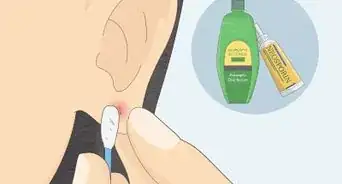 Best Ways to Clean an Ear Piercing (and How to Deal with an Infection)
Best Ways to Clean an Ear Piercing (and How to Deal with an Infection)
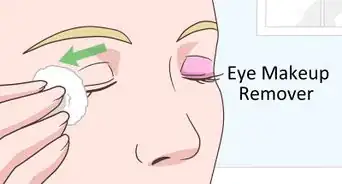


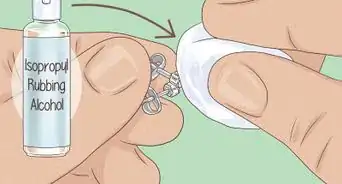

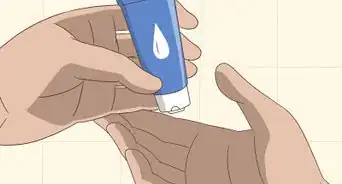
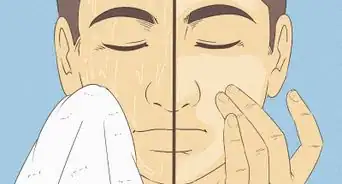
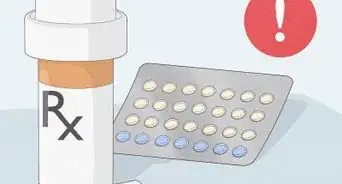

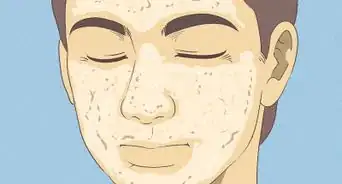
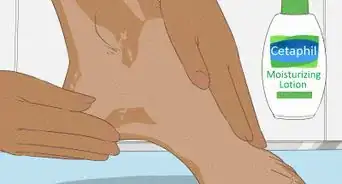
References
- ↑ https://www.aad.org/public/diseases/a-z/dry-skin-self-care
- ↑ https://www.ncbi.nlm.nih.gov/pmc/articles/PMC5796020/
- ↑ https://www.glamour.com/story/how-to-prevent-treat-razor-burn
- ↑ https://www.aad.org/public/everyday-care/itchy-skin/itch-relief/relieve-uncontrollably-itchy-skin
- ↑ https://www.prevention.com/health/a29505787/itchy-legs-causes/
- ↑ https://share.upmc.com/2015/03/prevent-runners-itch-save-workout/
- ↑ https://share.upmc.com/2015/03/prevent-runners-itch-save-workout/
- ↑ https://www.aad.org/public/diseases/a-z/dry-skin-self-care
- ↑ https://www.ninds.nih.gov/Disorders/Patient-Caregiver-Education/Fact-Sheets/Restless-Legs-Syndrome-Fact-Sheet
- ↑ https://www.aad.org/public/everyday-care/itchy-skin/itch-relief/relieve-uncontrollably-itchy-skin
- ↑ https://www.aad.org/public/everyday-care/itchy-skin/itch-relief/relieve-uncontrollably-itchy-skin
- ↑ https://www.diabetes.org/diabetes/complications/skin-complications
- ↑ https://www.prevention.com/health/a29505787/itchy-legs-causes/
About This Article

